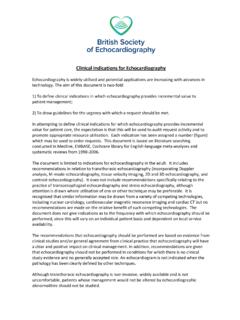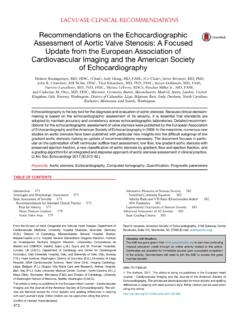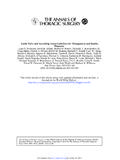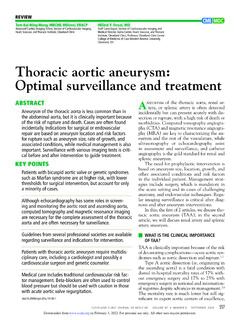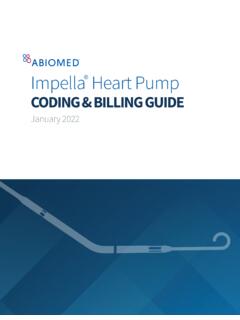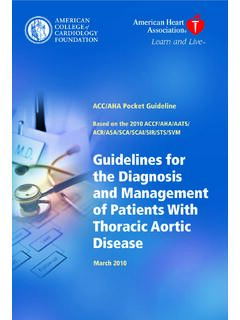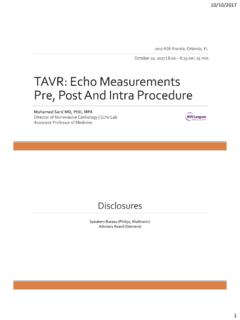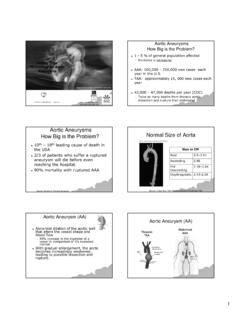Transcription of A Guideline Protocol for the Assessment of Aortic Stenosis ...
1 PAGE 9A Guideline Protocol for the Assessment of Aortic Stenosis , Including Recommendations for Echocardiography in Relation to Tr anscatheter Aortic Valve ImplantationFrom the British Society of Echocardiography Education CommitteeBushra Rana (Lead Author)Richard Steeds, ChairHollie BrewertonAlison CarrRichard JonesPrathap KanagalaDaniel KnightThomas MathewKevin O GallagherDave OxboroughLiam RingJulie SandovalMartin StoutGill WhartonRichard WheelerReview and information relating to this document has been provided by John Chambers, Mark Monaghan, Derek Chin, Navroz Masani, and Simon Introduction1. 1 The BSE Education Committee has recently published a minimum dataset for a standard adult transthoracic echocardiogram, available on-line at This document specifically states that the minimum dataset is usually only sufficient when the echocardiographic study is entirely normal.
2 The aim of the Education Committee is to publish a series of appendices to cover specific pathologies to support this minimum The intended benefits of such supplementary recommendations are to: Support cardiologists and echocardiographers to develop local protocols and quality control programs for adult transthoracic study; Promote quality by defining a set of descriptive terms and measurements, in conjunction with a systematic approach to performingand reporting a study in specific disease-states; Facilitate the accurate comparison of serial echocardiograms performed in patients at the same or different This document gives recommendations for the image and analysis dataset required in patients being assessed for Aortic has become the standard method for evaluating Aortic Stenosis severity. Other methods such as cardiaccatheterisation are not routine except where the data is non-diagnostic or discrepant with clinical the standard method for evaluation of Aortic Stenosis , there are a number of situations in which data fromechocardiography may at first appear inconsistent.
3 If dealt with in a structured fashion, many of these inconsistencies may bereconciled and important information gained to assist patient management. A structured approach is outlined in Appendix of Aortic Stenosis has been altered by the availability of transcatheter Aortic implantation as an alternative treatment forthose at high risk or excluded from conventional surgery. Given the central role of echocardiography before, during and afterimplantation of these devices, there is a further Appendix (2) relating specifically to Assessment for transcatheter Aortic The views and measurements are supplementary to those outlined in the minimum dataset and are given assuming a full studywill be performed in all When the condition or acoustic windows of the patient prevent the acquisition of one or more components of the supplementaryDataset, or when measurements result in misleading information ( off-axis measurements)
4 This should be This document is a Guideline for echocardiography in the Assessment of Aortic Stenosis and will be up-dated in accordance withchanges directed by publications or changes in 10 MeasurementCusps viewed1 Cusp anatomyAppearanceMobilityThickeningCalci ficationMeasurementsLVOTA nnulusAortic RootAscending aortaExplanatory noteNCC/RCCS ystolic doming/asymmetric closure line(?bicuspid).Commissure fusion (?rheumatic).Degree of restrictiongrade as: mild =restricted motion at basal1/3 adjacent to hinge only, moderate=base+ body (middle third), severe=base+body+free edge (distal 1/3)Mild/moderate/severeDescribe severity: mild/mod/severe mild = small isolated spots ; moderate =multiple larger spots; severe = heavily calci-fied, extensive thickening and calcification ofall and extent:-AV cusps- free edge, body, base (point ofinsertion).
5 -LVOT,annulus, Aortic wall, Aortic root,ascending per min dataset,performed at similarlevel as LVOT PW Doppler velocity traceobtained from either 5CV or 3CV, see below.[Zoom mode,mid systole,min 3 beats (5 ifAF) measure inner edge to inner edge]Zoom mode; Measure from cusp hingepoints (at point of cusp insertion into wall),ignoring all calcification. Measure maximumdimension where seen best in cardiac cycle(see notes 3)Try to obtain symmetrical Aortic root sinuseswith ascending aorta not maximum diameter where seenbest in cardiac cycle. Inner edge-inner edge(blood tissue interface).Modality2D VIEWPLAXB icuspid AV with asymmetric closure lineImagetricuspid AV with heavily calcified cuspsPAGE 11(AV level, above, below)AR jetCusps viewedCusp anatomy Mobility/thickening/cal-cificationNumber of cuspsCalcificationAV levelLVOTA ortic RootAscending aorta2D planimetryTurbulent flow(AV level,above, below)AR jetCusp anatomy Mobility/thickening/cal-cificationLVOT VTI(NOTE: can also beperformed in 3CV)Ensure turbulent flow as expected at valvelevel.
6 If below ?LVOT obstruction(See regurgitation quantification guidelines)NCC/RCC/LCC(as above)Bicuspid (elliptical systolic orifice with 2commissures) 4If possible, state which leaflets are not : location and extent(as above)AV cusps- free edge, body, insertion Sweep above and below AV -Protrusion ofcalcification into outflow tract below level wall, extension into lumen, recommended as routine measure1,since effective rather than anatomic ori-fice is primary predictor of alternative when Doppler esti-mation is unreliable ( coexisting LVOT obstruction) -If performed must ensure minimum orificeidentified, usually at the tips. 3D willassist in optimising this measurementAs abovegeneralobservationSample volume positioned just at level of AVannulus and moved carefully into the LVOT ifnecessary,until laminar flow curve smooth velocity curve with narrow band,well defined peak.
7 (Typically fromAV annulus in calcific AS; AV annulus level inbicuspid AS). Trace around outer signalColourDoppler2 DColourDoppler2 DDoppler PWPSAX,AV levelA5 CVNo turbulent flow seen below or above the AVleveltricuspid AV Bicuspid AV with elliptical orifice}PAGE 12AV Vmax/VTI Turbulent flow(AV level, above, below)AR jetCusps viewed Cusp anatomy Mobility/appearance/calcificationIf better alignmentwith flow across AV,consider additionalmeasurements, asabove Turbulent flow(AV level, above, below)AR jetMaximum velocity obtained should bereported. Trace around outer signal. Repeatin multiple acoustic windows in order todocument maximum velocity (see below).Shape of signal useful in -severe Stenosis : rounded shape, peak in midsystole-mild Stenosis : triangular, peak in early sys-tole Measurements:Max AV velocity Mean AV gradientAVA (Continuity equation)Additional useful measurements:VTI ratio or velocity ratio (dimensionlessindex)5 Severe < aboveNCC/RCCgeneralObservationas aboveCWColourDoppler2 DDopplerColourDopplerA3 CVAortic Stenosis with no LVOT obstruction;no tur-bulent flow in outflow tractTurbulent flow seen within outflow tract; LVOT obstruction.
8 }PAGE 13AV in short axisHunt for maximum AVvelocitySee PSAX sectionDocument in report which window maxi-mum velocity obtained2 DCWSC view(if poor PSAX)Blind DopplerR. parasternal(as shown)Also consider:ApicalSuprasternal SubcostalAS severityAS aetiologyAR severityAortic dimensionsLVEFLV hypertrophyLA sizeRV size and functionTR PAPO ther valve diseaseBP recordedBSA recordedPossible TOE indications Max velocity,mean gradient, AVA(report window where maximum velocity obtained). When AV parameters are discordant see appendix 1 Where possible comment on most likely cause ( ,degenerative, congenital/bicuspid)See regurgitation quantification guidelines (consider effects on velocity measurements)Dilatation associated with May indicate need for early surgery. Also exclude Aortic chamber quantification guidelinesAffects operative risk SeverityAffects operative risk and prognosis?
9 Mitral valve surgery in addition MR, functional versus degenerative diseaseIndex values as appropriate Indeterminate AS severity poor imagingAV annulus sizing/TAVI Assessment (see appendix 2)General considerationsAppendix 1: DISCREPANCIES IN PARAMETERS OF Aortic Stenosis SEVERITYD iscrepancies in Aortic valve (AV) parameters may occur in up to 25% of cases. The evidence base is not complete. However, the BSEE ducation committee would like to provide guidance in this clinical scenario. The following is a possible approach to imaging is placed on Assessment of AV anatomy and cusp mobility. Colour flow imaging can help judge approximate orifice may be indicated if doubt in these parameters can be broadly divided into three categories. Before proceeding, ensure you are satisfied the meas-urements are accurate. Run through the checklist below.
10 Then make some additional calculations where relevant and decide whichcategory the discrepancies in AV parameters belong (1-3).Therefore:A. Checklist:ensure measurements correct- LVOT diameter: compare with previous, is LVOT measurement accurate? Does resolution allow accurate measurement? Sigmoid sep-tum causing LVOT to be non-circular? Remember small error is LVOT diameter result in moderate AS becoming severe on diameter AVA ; AVA ; while diameter AVA LVOT PW Doppler: has the sample volume been placed at correct level and correct distance from AV, where laminar flow isobtained?- AV CW Doppler: is AV CW Doppler profile consistent? Ensure not mitral regurgitation signal!!- Dimensionless index (DI) or velocity ratio: severe < Although a useful additional measure, by removing the potential inaccura-cies of LVOT measurement, remember that it ignores inaccuracies due to abnormal LVOT anatomy isolated basal , its particular use is in the setting of serial measurements within the same individual or when assessing prosthetic valves ,especially where the size of the valve is parameters where relevant6-AVA indexed for BSA (AVAi);severe < - SV indexed for BSA (SVi).
